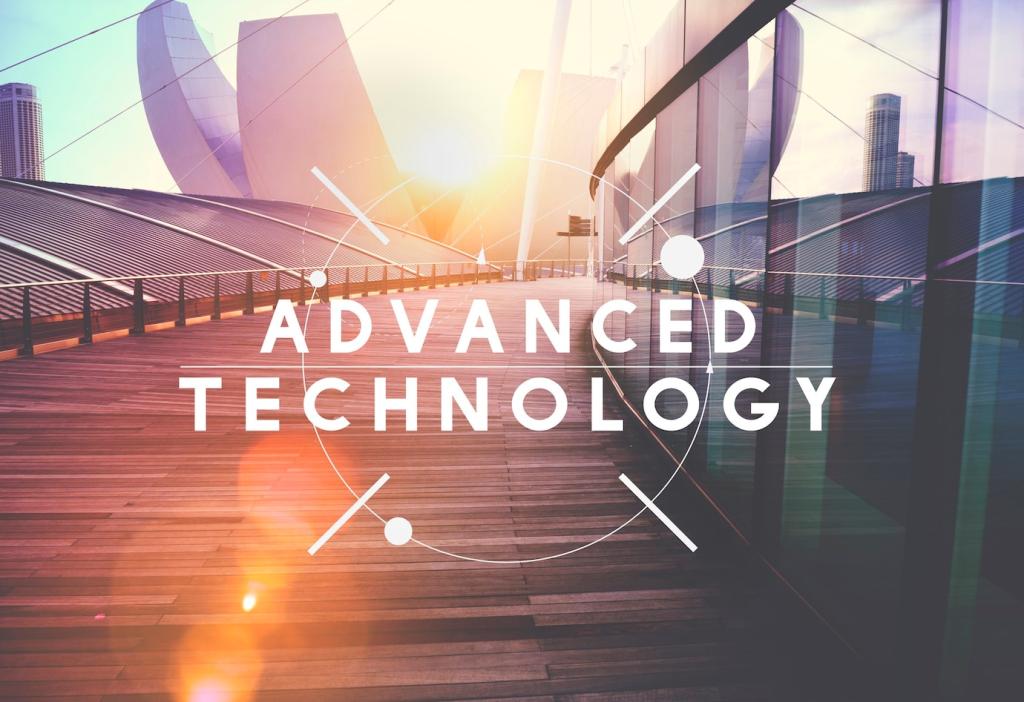Next-Gen Renewable Energy Technologies
Advanced Solar Power Systems
Perovskite Solar Cells
Perovskite solar cells represent a groundbreaking advancement in photovoltaic technology. Unlike conventional silicon-based panels, perovskites offer easier manufacturing processes, potentially lower costs, and the ability to achieve high power conversion efficiencies. These materials can be fabricated on flexible substrates, opening up new possibilities for lightweight and portable solar applications. Research continues into improving their long-term stability and scaling production, but their rapid progress positions them as a strong candidate to surpass traditional solar technologies, making solar power more accessible across the globe.
Bifacial Photovoltaic Panels
Bifacial photovoltaic panels are an innovative approach to capturing solar energy, as they can collect sunlight from both their front and rear surfaces. This capability significantly boosts energy generation, especially in areas where sunlight is reflected off surfaces such as sand, water, or even snow. Bifacial modules are being designed with durable, transparent back sheets or dual-glass constructions, ensuring enhanced reliability in varying weather conditions. Their growing application in utility-scale projects is accelerating the transition to higher-yield solar farms, optimizing land use and system performance.
Building-Integrated Photovoltaics (BIPV)
Building-integrated photovoltaics seamlessly incorporate solar cells into construction materials, such as windows, façades, or roofing tiles. This technology transforms buildings into decentralized power generators without compromising aesthetics or usable space. BIPV systems play a crucial role in urban energy strategies, enabling energy self-sufficiency for homes and businesses. As architectural trends and regulatory frameworks embrace sustainable design, BIPV is poised to become an essential feature of modern construction, making renewable energy adoption an integral part of city infrastructure.
Cutting-Edge Wind Energy Innovation
Vertical Axis Wind Turbines (VAWTs)
Vertical axis wind turbines offer a novel design compared to conventional horizontal turbines. Their vertical alignment allows them to capture wind from any direction, making them particularly effective in urban or turbulent environments. VAWTs operate at lower wind speeds and typically have quieter operation, which is ideal for residential or city-based installations. Ongoing advancements are focused on increasing their power output and reducing maintenance needs, aiming to provide a more versatile and aesthetically pleasing alternative for distributed wind energy generation.
Floating Offshore Wind Farms
Floating offshore wind farms address one of the key barriers to wind energy expansion: access to deep-water sites with consistent, strong winds. Unlike fixed-bottom turbines, these floating platforms can be deployed far from shore, where wind resources are superior and visual/auditory impacts are minimized. The engineering behind these structures involves sophisticated mooring and dynamic cable systems to ensure stability and grid connectivity. With growing investments and increasingly proven technologies, floating wind represents a promising frontier for scalable, high-output renewable energy.
Airborne Wind Energy Systems
Airborne wind energy systems are an emerging technology that utilizes tethered drones, kites, or other airborne devices to harness wind energy at higher altitudes. These platforms can reach stronger and more consistent winds, enabling power generation in locations where traditional towers are impractical. Airborne systems promise reduced material usage, greater mobility, and potential for rapid deployment. The technology is still in the demonstration phase but holds the potential to revolutionize how and where wind energy can be generated in the future.
Next-Level Energy Storage Solutions

Solid-State Batteries
Solid-state batteries offer significant improvements over conventional lithium-ion batteries by replacing liquid electrolytes with solid materials. This change increases energy density, safety, and lifespan, making them ideal for both grid-scale storage and electric vehicles. Their enhanced thermal stability reduces the risk of fires, addressing one of the major safety concerns associated with traditional batteries. As manufacturing techniques evolve and costs decline, solid-state batteries have the potential to transform how renewable energy is stored and distributed.

Flow Battery Technology
Flow batteries provide a unique solution for large-scale energy storage by utilizing two liquid electrolytes that are circulated through electrochemical cells. These systems can be scaled easily by increasing the size of storage tanks, making them highly adaptable for grid applications. Flow batteries can deliver extended discharge durations and experience minimal degradation over many cycles, offering reliable long-term storage for wind and solar farms. Research continues into new chemistries and materials to enhance efficiency and reduce costs, further unlocking their potential in the renewable energy landscape.

Hydrogen as an Energy Carrier
Hydrogen is rapidly gaining prominence as a versatile energy carrier for both storage and transportation. Renewable energy can be used to produce “green” hydrogen through electrolysis, separating water into hydrogen and oxygen. The resulting hydrogen can be stored, transported, and converted back into electricity or used directly in various industrial applications. This approach offers a pathway to decarbonize sectors that are otherwise challenging to electrify, such as heavy industry and transportation, while providing seasonal or long-term energy storage capacity for variable renewable resources.
